Event in Newfoundland and Labrador marks 50 years of post-secondary tradition
On a February weekend, at the top of a small hill at a ski resort two hours northeast of St. John’s, Newfoundland and Labrador, a team of NAIT Civil Engineering Technology students wondered if, finally, they might be poised for success. They’d spent four months preparing for this, the 2024 Great Northern Concrete Toboggan Race (GNCTR). The coming 20-second run would determine if it was worth the effort.
You could, however, say they’d already succeeded, given the odds these 18 young people had beaten just to get here.
“We did the impossible,” says team captain Karan Mann.
The exaggeration is only slight. In the lead-up to this annual gathering of engineering students from across Canada – each team seeking to slide to victory in sleds fixed with concrete skis – too many factors threatened to derail Bogwart’s Express, as Mann and the team named theirs in a nod to Harry Potter.
For example,
- they started with no notes from previous NAIT GNCTR teams (the last being 2020) about what worked and what didn’t
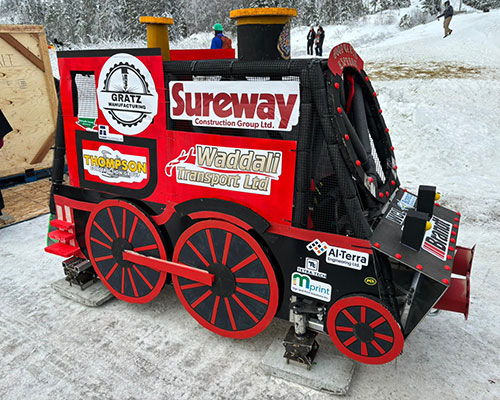 other than $4,000 leftover from the last team, they had no money (they’d need tens of thousands)
other than $4,000 leftover from the last team, they had no money (they’d need tens of thousands)- early concrete formulations for the skis were mysteriously full of air, weakening them
- a lack of snow meant the team could manage only one quick test of their sled before shipping it east
- all of this extracurricular work competed with required courses (Civil Eng Tech is notoriously heavy), making for long nights and extra stress
- on the way to St. John’s, high winds forced the plane to detour to Toronto overnight (the next day, the team got off the plane and rushed straight to events)
But at the top of that hill all was forgotten. It was a reasonable -10 C. There was a crowd of some 400 cheering spectators, mostly peers from schools across Canada.
The team members were being given the chance to prove themselves in an 50-year-old tradition that started in Alberta (with NAIT one of the four local teams to congregate in Red Deer) and has been known in engineering circles ever since as an extreme extracurricular skills builder.
Or, they hoped they were about to prove themselves. Mann and a teammate each took a side of the sled and gave it and its five riders a push.
Then they held their breaths and watched, the glistening grey skis, forged in Edmonton, picking up speed over Atlantic snow.
“Failure is not an option”
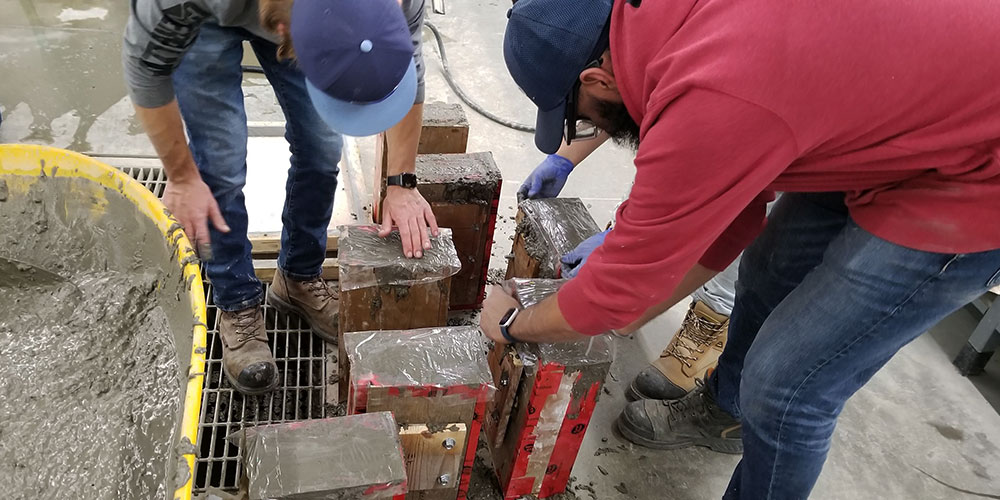
The word “toboggan” doesn’t capture the extent of the event, which has been covered by the likes of Sports Illustrated and featured on The Rick Mercer Report. Nor does it speak to the demands placed upon participating students.
Minus engines, these are vehicles. In addition to pouring skis, builders need to develop steering and braking systems, and indestructible roll cages. The work must be documented with technical reports, safety and risk assessments, and a detailed budget. And, despite the concrete, the sled has to weigh less than 350 pounds.
“This is a great activity to combine all the things that you've been working on in classes,” says lab tech Tanya Rollins. “There is a huge academic portion to it.”
And a huge hands-on portion, too. Before and after classes, Rollins would supervise concrete mixes in an industrial lab on Main Campus. The team worked through iterations of ingredients, proportions and techniques to arrive at a lightweight but durable mix to be poured into moulds that Mann sometimes spent most of a previous night cleaning for reuse.
(“Failure is not an option,” he said the day after one such night, exhausted.)
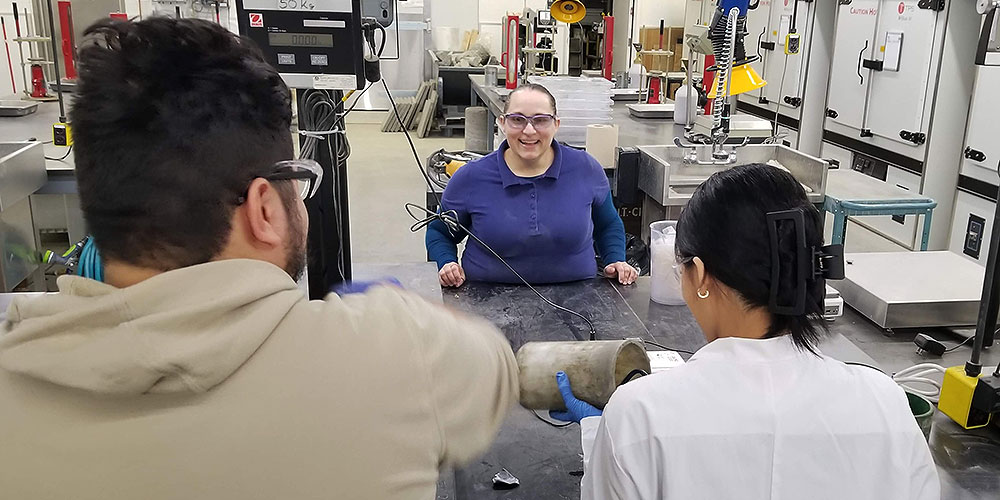
That doggedness points to how much the project reflects industry – and in ways that aren’t necessarily covered in the classroom. There may not be a Concrete Toboggan Inc. waiting to hire students after the event, but the skills are highly transferable.
“I know they worked past midnight on deadlines,” says instructor Dan Sune (Civil Engineering Technology ’03), who initially encouraged the students to take on the project. “In industry,” he adds, “I used to pull all-nighters getting work done.”
As well, students learn about project management, and even develop communications skills in making their case for donations to help their otherwise unfunded cause.
“People who succeed at that are the people that industry is looking for.”
One of those gifts was arranged by Glenn Fereday (Civil Engineering Technology ’01), COO at Thompson Construction. Fereday was on NAIT’s GNCTR team in 2000 in Regina and 2001 in Kingston. As for their results, he says, “you’d have to check the history books. I know we didn’t win.”
But he gained valuable lessons that had a place in his career to come: teamwork, problem solving and more.
“People who succeed at that are the people that industry is looking for,” he says.
Rollins would agree, having come from that industry herself. “It shows that they can go above and beyond,” she says.
And sometimes, they can get to a finish line that others can’t.
A good feeling
Before their turn, the team watched others struggle. One sled had its brakes accidentally deploy as it was being towed up the hill, shearing them off and disqualifying the team. Another sled turned sideways halfway down, skidding to a halt. In fact, no other team from Alberta actually completed a run.
They were teams that Lindsey Jackson had felt were on par with hers.
“Seeing that, and we're going next, we were like, ‘Oh no,’” says the president of NAIT’s Civil Engineering Society and vice-president of the club that managed the toboggan project.
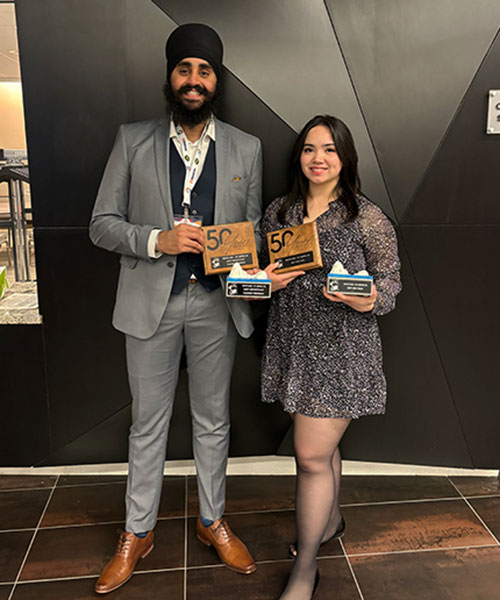 After letting go, Mann worried too. “It was a little scary because you could see that it wanted to turn a bit … [I] was just hoping and praying that it didn’t spin out.”
After letting go, Mann worried too. “It was a little scary because you could see that it wanted to turn a bit … [I] was just hoping and praying that it didn’t spin out.”
But the pilot, Jackson (son of Glenn) Fereday, had it under control.
“The steering team did an amazing job on our system,” he says.
The team crossed the finish line and engaged the brakes, which dug hard into the snow. The sled stopped so abruptly that decorations fell off. The suddenness didn’t phase the crew.
“It was a good feeling,” says Fereday, “knowing that we got down and everyone stayed inside and it didn't roll over.”
In the end, the team came away with three awards: best new team (better than it sounds, because the pandemic had postponed the event until now, making every team new), most attractive sled, and third-best brakes.
“Overall, we did pretty good,” says Fereday.
Overall, that might be an understatement. As Mann and Lindsey Jackson point out, their team consisted of students of a two-year diploma going sled-to-sled with others who were taking degrees, post-docs, or even alumni currently working in the field.
“It was a really strong team,” says Sune. “They did an amazing job.”
A renewed tradition

Other than exhaustion from “networking” activities in Newfoundland and Labrador, and a debilitating cold passed among team members on the way home, the students returned to Edmonton without facing headwinds or other adversity.
Like Glenn Fereday does, they’re certain to look back on their accomplishments with fondness and pride. Students that follow in their ski tracks might appreciate their efforts too. Unlike their own predecessors, the latest group will cache designs and reports for future reference.
“This is going to be a tradition moving forward,” says Sune.
As Mann and Jackson and their colleagues add this experience, and the skills it taught them, to their resumés, they’re turning their attention back to their coursework and upcoming exams. They’ve earned the free time.
Whether they really want it is debatable. What seems to stand out in their minds is that moment on the hill, the memory of the cheering crowd blocking out the frustration of failed concrete mixes, sleepless nights and the relentless multitasking.
“We’re thinking of joining next year.”
“Actually,” says Lindsey Jackson, “we’re thinking of joining next year.”
She can compete after graduation as an alumnus. Thanks to a co-op placement, Mann will technically still be a student. And Jackson Fereday is only in his first year, having yet to even formally study concrete formulation in a classroom.
Which means that NAIT’s concrete toboggan will slide again, and – odds anticipated, design and mettle tested, and memories made – perhaps more smoothly than ever.
NAIT’s 2024 Great Northern Concrete Toboggan Race team roster
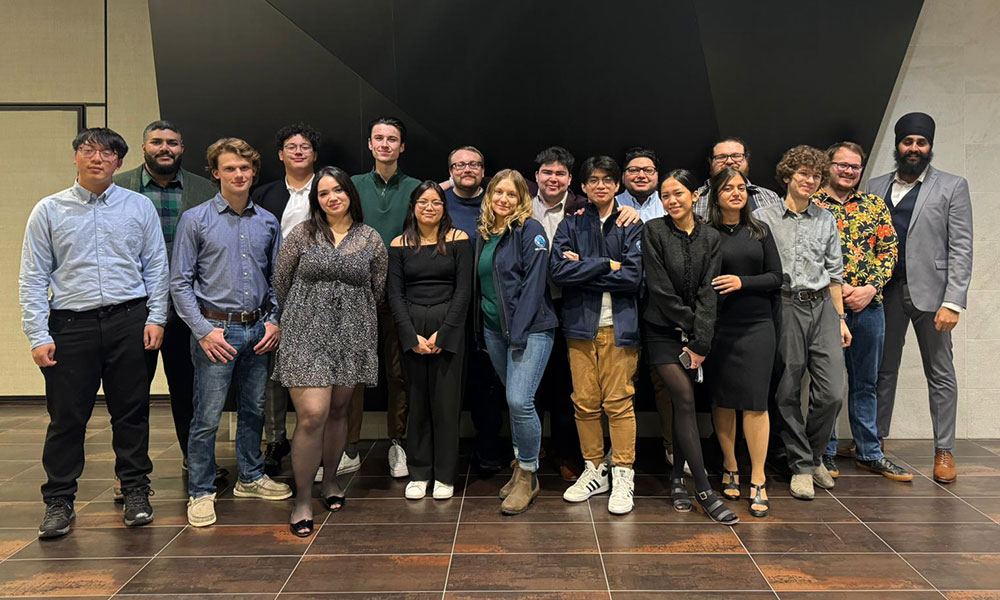
John Anacta
Samuel Anwar
Regan Belchamber, Spirit Lead
Jakub Cebula, Structural Lead
Marielle De Guzman
Margaret Duong, Vice-president Finance
Jackson Fereday, Mechanical Co-lead
Daniel Hutyra, Vice-president Operations
Lindsey Jackson, Vice-president
Taniya Kishore
Hugolino Lucio
Sean Kyle Mabiog
Johnathan Mah
Karanjit Mann, President and Captain
Francisco Medina, Concrete Lead
Tanya Rollins, Faculty Adviser
Tristan Stark
Dan Sune (Civil Engineering Technology ’03), Faculty Adviser
Lakota Testawich, Mechanical Co-lead
Quintin TempleAngelica Vergara
Evan Vik, Logistics Lead